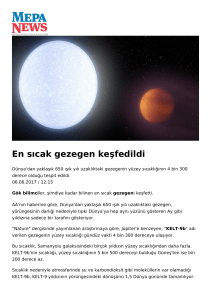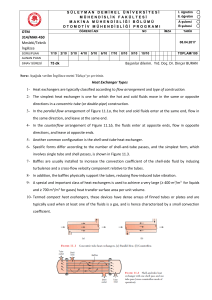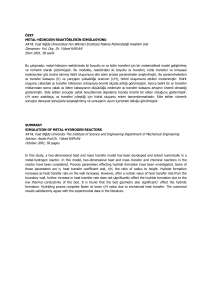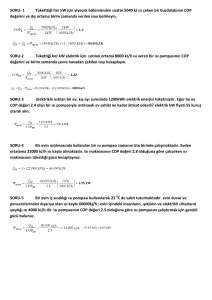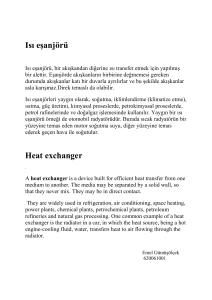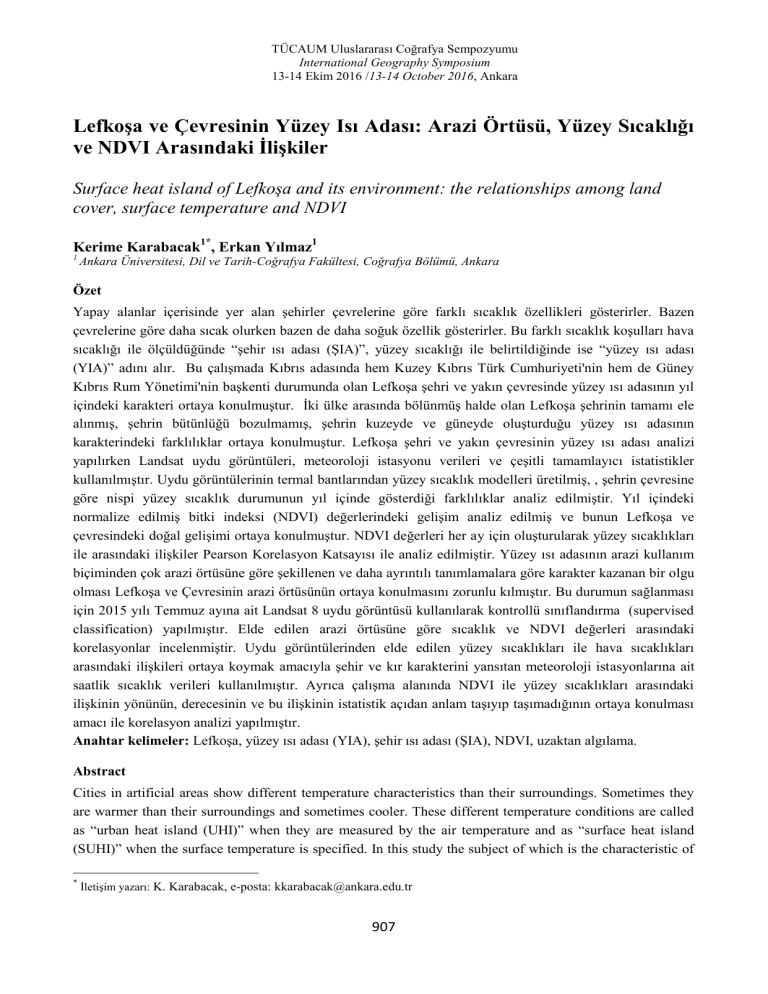
TÜCAUM Uluslararası Coğrafya Sempozyumu
International Geography Symposium
13-14 Ekim 2016 /13-14 October 2016, Ankara
Lefkoşa ve Çevresinin Yüzey Isı Adası: Arazi Örtüsü, Yüzey Sıcaklığı
ve NDVI Arasındaki İlişkiler
Surface heat island of Lefkoşa and its environment: the relationships among land
cover, surface temperature and NDVI
Kerime Karabacak1*, Erkan Yılmaz1
1
Ankara Üniversitesi, Dil ve Tarih-Coğrafya Fakültesi, Coğrafya Bölümü, Ankara
Özet
Yapay alanlar içerisinde yer alan şehirler çevrelerine göre farklı sıcaklık özellikleri gösterirler. Bazen
çevrelerine göre daha sıcak olurken bazen de daha soğuk özellik gösterirler. Bu farklı sıcaklık koşulları hava
sıcaklığı ile ölçüldüğünde “şehir ısı adası (ŞIA)”, yüzey sıcaklığı ile belirtildiğinde ise “yüzey ısı adası
(YIA)” adını alır. Bu çalışmada Kıbrıs adasında hem Kuzey Kıbrıs Türk Cumhuriyeti'nin hem de Güney
Kıbrıs Rum Yönetimi'nin başkenti durumunda olan Lefkoşa şehri ve yakın çevresinde yüzey ısı adasının yıl
içindeki karakteri ortaya konulmuştur. İki ülke arasında bölünmüş halde olan Lefkoşa şehrinin tamamı ele
alınmış, şehrin bütünlüğü bozulmamış, şehrin kuzeyde ve güneyde oluşturduğu yüzey ısı adasının
karakterindeki farklılıklar ortaya konulmuştur. Lefkoşa şehri ve yakın çevresinin yüzey ısı adası analizi
yapılırken Landsat uydu görüntüleri, meteoroloji istasyonu verileri ve çeşitli tamamlayıcı istatistikler
kullanılmıştır. Uydu görüntülerinin termal bantlarından yüzey sıcaklık modelleri üretilmiş, , şehrin çevresine
göre nispi yüzey sıcaklık durumunun yıl içinde gösterdiği farklılıklar analiz edilmiştir. Yıl içindeki
normalize edilmiş bitki indeksi (NDVI) değerlerindeki gelişim analiz edilmiş ve bunun Lefkoşa ve
çevresindeki doğal gelişimi ortaya konulmuştur. NDVI değerleri her ay için oluşturularak yüzey sıcaklıkları
ile arasındaki ilişkiler Pearson Korelasyon Katsayısı ile analiz edilmiştir. Yüzey ısı adasının arazi kullanım
biçiminden çok arazi örtüsüne göre şekillenen ve daha ayrıntılı tanımlamalara göre karakter kazanan bir olgu
olması Lefkoşa ve Çevresinin arazi örtüsünün ortaya konulmasını zorunlu kılmıştır. Bu durumun sağlanması
için 2015 yılı Temmuz ayına ait Landsat 8 uydu görüntüsü kullanılarak kontrollü sınıflandırma (supervised
classification) yapılmıştır. Elde edilen arazi örtüsüne göre sıcaklık ve NDVI değerleri arasındaki
korelasyonlar incelenmiştir. Uydu görüntülerinden elde edilen yüzey sıcaklıkları ile hava sıcaklıkları
arasındaki ilişkileri ortaya koymak amacıyla şehir ve kır karakterini yansıtan meteoroloji istasyonlarına ait
saatlik sıcaklık verileri kullanılmıştır. Ayrıca çalışma alanında NDVI ile yüzey sıcaklıkları arasındaki
ilişkinin yönünün, derecesinin ve bu ilişkinin istatistik açıdan anlam taşıyıp taşımadığının ortaya konulması
amacı ile korelasyon analizi yapılmıştır.
Anahtar kelimeler: Lefkoşa, yüzey ısı adası (YIA), şehir ısı adası (ŞIA), NDVI, uzaktan algılama.
Abstract
Cities in artificial areas show different temperature characteristics than their surroundings. Sometimes they
are warmer than their surroundings and sometimes cooler. These different temperature conditions are called
as “urban heat island (UHI)” when they are measured by the air temperature and as “surface heat island
(SUHI)” when the surface temperature is specified. In this study the subject of which is the characteristic of
*
İletişim yazarı: K. Karabacak, e-posta: [email protected]
907
the SUHI within the year in Lefkoşa city and its close surrounding, which is the capital of both the Turkish
Republic of Northern Cyprus and the Greek Administration of Southern Cyprus. The entire city of Nicosia,
which is divided between the two countries, is handled and the differences in the character of the surface heat
island that the city has formed in the north and south have been revealed. Landsat satellite images,
meteorological station data and various definitive statistics were used in the analysis of the surface
temperature of Nicosia city and its immediate surroundings. Surface temperature models were generated
from thermal bands of satellite images and the differences that relative surface temperature status shows
within the year as compared with the surrounding of the city were analyzed. The development of normalized
vegetation index (NDVI) values during the year was analyzed and revealed its natural development in
Nicosia and its surroundings. The NDVI values were calculated for each month and the relationships
between the surface temperatures and NDVI were analyzed with Pearson coefficient of correlation. It is a
fact that the surface heat island is formed according to the land cover rather than the land use form and has a
character according to the more detailed description, necessitating the land cover of Nicosia and its
surrounding. To achieve this, supervised classification was made using the Landsat 8 satellite image for July
2015. Correlations between temperature and NDVI values were examined according to the obtained land
cover. Hourly temperature data from urban and rural station has been used in order to detect relationship
between satellite surface data and air temperature data. In addition, a correlation analysis was conducted with
the aim of determining the relationship between the NDVI and surface temperatures in the study area, and
the degree and significance of this relationship.
Keywords: Lefkoşa, surface heat island (SUHI), urban heat island (UHI), NDVI, remote sensing.
908


